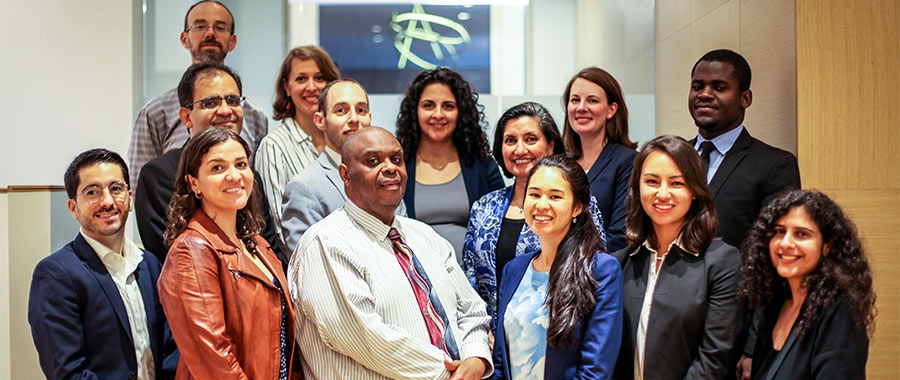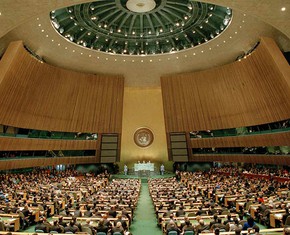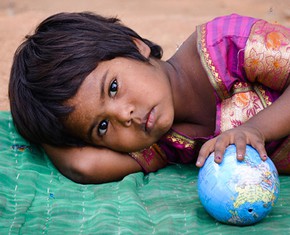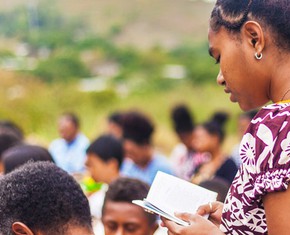With a rising risk of natural disasters around the world, a dynamic discussion hosted by the Baha’i International Community (BIC) examined the relationship between local capacity and preparedness and international and national assistance.
“As we move from the global level to the regional, national, local, and community, the silos that sometimes divide us start to dissipate. We see at the community level, the community leader is also a neighbor, also a teacher. Everyone wears so many hats,” said Daniel Perell, a BIC representative. “That level of common enterprise that is so common at the neighborhood level needs to rise up to the international level.”
International response to natural disasters is vital to bringing to stricken areas urgent humanitarian relief, material resources, and knowledge. But alongside aid, the role of local capacity and preparedness is a vital area of learning, speakers noted. For the Baha’i community, the power of unity and collective enterprise as well as the importance of certain capacities at the local level has been demonstrated in a number of cases of natural disaster recovery in recent years.
Dozens of participants, representing a diversity of non-governmental organizations with experience in natural disaster response and recovery, joined the discussion held on Friday alongside the United Nations’ High-Level Political Forum on Sustainable Development. The event was co-organized by the BIC, the U.N. Office for Disaster Risk Reduction, and the Global Network of Civil Society Organisations for Disaster Reduction. Mami Mizutori, the Assistant Secretary-General and Special Representative of the Secretary-General for Disaster Risk Reduction, also attended and spoke.
The Forum, which began on 9 July, is an annual gathering for U.N. member states and NGOs to reflect on progress in the Sustainable Development Goals, 17 global targets that the international community aims to reach by 2030. Friday’s panel was one of three organized by the BIC, focusing on different target areas of the Development Goals. The other two panels, held on Thursday, focused on how education can empower youth to contribute to the progress of their societies and conceptualizing peace not merely as an absence of conflict but as a condition of collective thriving.
In its statement to the Forum, the BIC commended the international community’s consensus around the Sustainable Development Goals, but cautioned that “translating those aspirations into lived reality will require a tremendous expansion of Agenda 2030’s ‘spirit of strengthened global solidarity.’ Crucial in this regard will be ensuring that recognition of the interconnected nature of humanity is a principal consideration in both policy-making and action.”
Friday’s disaster response panel showed the diversity of organizations that are thinking about the critical role of local communities. Central to this is the relationship between national and international policy and local capacity and ability to organize. Several speakers discussed the importance of global disaster response and recovery, but noted that national and international policies need to be made in concert with local communities and informed by their own practices.

Willy Missack, who works with Oxfam in Vanuatu, shares his country’s experience in connecting policymaking to community practices, explaining that meaningful policies come when the government and civil society organizations work together.
Willy Missak, who works with Oxfam in Vanuatu, shared his country’s experience in connecting policy-making to community practices, explaining that effective policies come when the government and civil society organizations work together. Transformation, he noted, comes from unified action at the grassroots, but this needs to be coordinated with the national level.
Kathryn Adams, executive director of Haiti-based LIDÈ, spoke about her organization’s efforts to help locals develop expertise in medical, psychological, legal, and other skills necessary to disaster response. “We don’t do enough in disaster response to embed resilience. By that I mean finding ways to turn disaster response into an opportunity to empower people to build tools for future use,” Dr. Adams explained.
The Baha’i community’s experience indicates that people can exhibit remarkable resilience, selflessness, resourcefulness, and creativity during times of disaster. In its 2016 statement, Rising Together: Building the Capacity to Recover from Within, the Baha’i International Community wrote that communities “that have been especially effective in responding have—prior to the disaster—been consciously working to create distinctive and beneficial patterns of collective life.” In short, localities where the fabric of community life is strong are more resilient and better equipped to respond to disasters.

















Comments
Sign in or create an account
Continue with Googleor